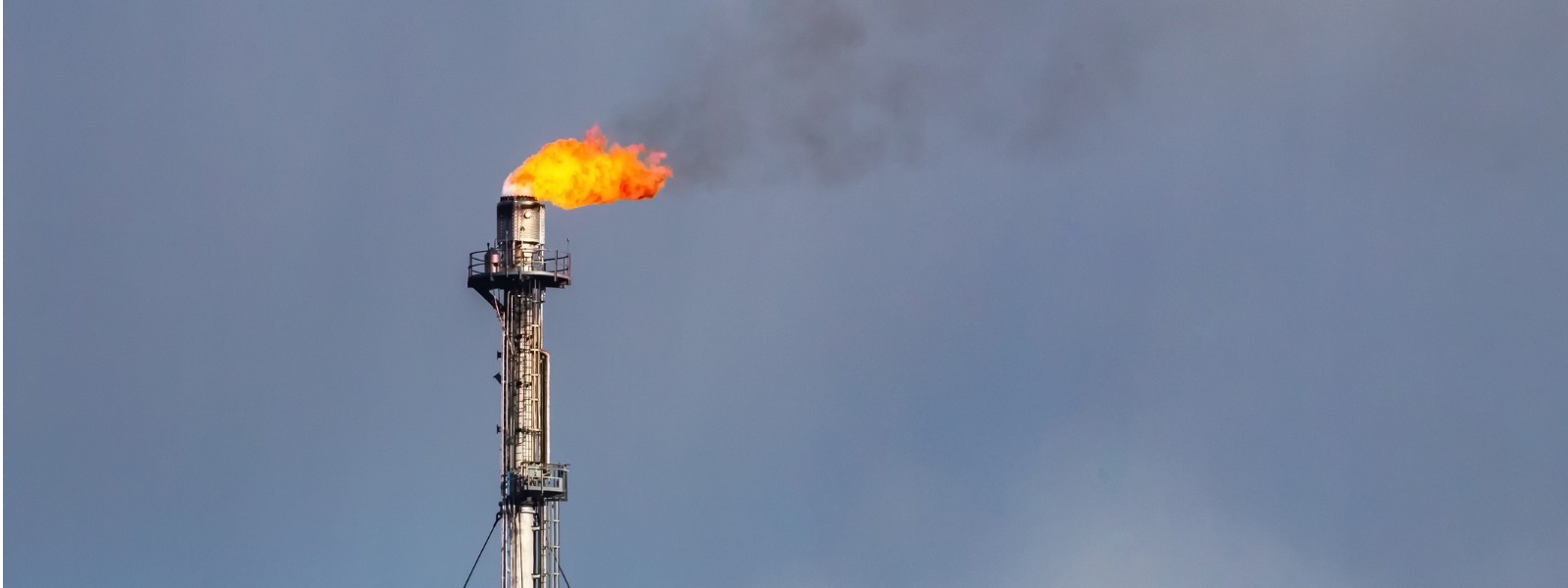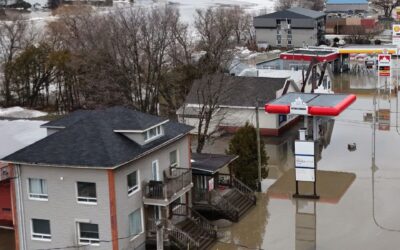COVID-19 Recovery series
As the country moves towards economic recovery from the pandemic, the Institute considers the policy choices ahead for Canada.
The COVID-19 economic shock coupled with the global oil shock have resulted in unprecedented pressure on Canada’s oil producers. The price for Western Canadian Select (WCS), the price most Canadian producers receive, hit single digits in mid-April and then went negative for near-term futures contracts. Maybe it’s no surprise the Canadian Association of Petroleum Producers called for a freeze in the federal carbon price at $30 under the guise of “do no harm.” But will carbon pricing be the straw that breaks producers’ backs? Our analysis suggests that’s unlikely.
In this blog, we’re going to get technical, assessing the combined impacts of the COVID-19 shock and the industrial carbon price on Alberta’s oil sands facilities.
Overall, the data suggests that Alberta’s industrial carbon pricing program does not present a material risk to ongoing operations—even in the face of the recent oil price shock. Some firms are, in fact, materially better off under the program, since they are generating emission reduction credits that are salable and improve balance sheets. Still, the COVID-19 shock is evolving, and governments should be prepared to step in and adjust if market conditions deteriorate further, especially if demand goes further off the deep end.
Measuring the effects of COVID-19 and carbon pricing
Known as output-based pricing (OBP), Canada’s industrial carbon pricing systems—including Alberta’s Technology Innovation and Emissions Reduction (TIER) Regulation—are designed to create incentives for Canadian producers to reduce emissions while staying competitive in global markets. (See here for more details.)
While Alberta’s OBP system is reducing emissions, what can we say about the operational risk to the facilities? And how does that risk change with COVID-19 and the oil shock?
To understand these complex questions, we need two things:
- An economic hardship test. Alberta published in 2017 the Standard for Developing Benchmarks (the Standard) to assess the potential for economic harm on facility operations from industrial carbon pricing. According to the Standard, economic hardship exists when the costs of complying with carbon pricing are more than 10% of operating profit or 3% of facility sales. The two tests can be thought of as a continuum of impact with the profit test indicating risk to returns to investors while the sales test indicates a risk to the continued operation of the facility.
- Estimated compliance costs. In OBP systems, each facility or product grouping is assigned an emissions-intensity benchmark, defined as emissions per unit of production. These benchmarks are typically set to reflect top-performing facilities. If a facility reduces emissions and exceeds the benchmark, it can generate a credit that has value. On the other hand, more emissions-intensive facilities will face carbon costs under the policy. The farther a facility is from achieving the performance benchmark, the more they owe.
Using Alberta facility data and the TIER Regulation, we constructed a simple model for 20 oil sands facilities. Using that model, we explored three possible COVID-19 shocks coupled with increased carbon pricing:
- The oil price drop. In the new COVID-19 reality, the U.S. Energy Information Administration has forecast the West Texas Intermediate (WTI) oil price to be USD$24 per barrel in 2020 and USD$41 in 2021. The WCS discount from the WTI, or the price received by most oil sands producers, is set in the model to 25% of the WTI based on the three-year historical discount. For reference, the WCS 2019 oil price was USD$45 per barrel.
- Profit decline. In the COVID-19 case, the profit rate published in the Standard for use in the profit test is reduced by 75% in 2020 to reflect the low oil price and 50% in 2021.
- Production declines. OBP systems are designed to scale with production, automatically updating compliance costs as demand for globally traded commodities, such as oil and steel, fluctuates. The oil sands facility data indicates that compliance costs can increase even if production falls, where energy use and emissions don’t necessarily fall proportionally with production. The implication is that, with a COVID-19 related drop in production, compliance costs could rise—pushing some facilities into financial trouble. We assess a production drop of 20% for all facilities from the reported 2018 level, consistent with the latest insight from the International Energy Agency and current speculation.
- A carbon price increase. We tested carbon prices of CAD$30 and $40 per tonne of CO2e reflecting the federal carbon price schedule for 2020 and 2021.
Effects of carbon pricing are counter-intuitive
Based on our assessment, economic risk in the oil sands sector isn’t materially different relative to the pre-COVID case. In fact, in many ways the effects of carbon pricing are counter intuitive under current conditions. For instance:
- Some facilities are better off with carbon pricing than without. Of the 20 facilities, 3 are beating the benchmarks, generating valuable credits that can be sold or banked for future use.
- In the face of the COVID-19 oil shock, carbon pricing does not pose an operation risk but is a profit risk for some facilities. Prior to the COVID-19 shock with 2019 oil prices and a $30 carbon price, 2 of the 20 facilities fail both the sales and profit tests (Table 1). One to two additional facilities are pushed into the at-risk category, failing both the sale and profit tests, under the COVID-19 scenarios. There is a profit risk for an additional 5 facilities when profit levels are halved or more due to the low oil price. To the extent oil prices recover in 2021, the impact on facility profit of the COVID-19 shock is lessened.
- Additional production declines compound carbon pricing risks but still translate into small cost increases. If the oil price shock is also accompanied by a further drop in demand (and hence production), the possible adverse impact of the carbon price expands to more facilities. Per-barrel emissions costs double to the 40 to 50 cent range compared to the scenario where production does not decline with COVID-19.

- Recycling carbon pricing revenue to facilities and government subsidies reduces the risk. Under the output-based carbon pricing system in Alberta, any revenue generated through compliance payments is returned to industry for investments in emissions reduction technology. To date, about $259 million has been returned to the oil and gas sector from Emission Reduction Alberta. When considering the level of relief for a facility from the adverse impacts of the Alberta OBP system, the Alberta Standard deducts government support payments from the compliance cost calculation. COVID-19 support to the sector would further reduce the impact of the carbon price on facility operations. The cost impacts in Table 1 therefore likely overstate the costs of carbon pricing.
There’s space for more flexibility, if necessary
So as things currently stand, Alberta’s OBP system is not materially adding risk to the oil sands. By extension, pressing pause on carbon pricing isn’t going to materially address the much deeper risks from international market conditions.
However, the past month has demonstrated how quickly things can change. If conditions continue to deteriorate, governments may understandably seek to ease competitiveness pressures for Canada’s biggest emitters. Under that scenario, we see four alternatives to freezing the carbon price or reducing compliance obligations in OBP systems, some of which are already baked into the Alberta system:
- Ramp up real-time monitoring and data collection. Industry looking for relief should be prepared to provide transparent, real-time data to help governments understand how the pandemic is affecting businesses and make evidence-based policy choices.
- Use safeguards already contained in the Alberta OBP system. If COVID-19 or any other factor were to severely impact the financial health of facilities, the Cost Containment Relief Mechanism contained in the Standard offers a relief valve that maintains carbon pricing and limits financial impact. The basis for triggering cost containment are the sales and profit tests that are calculated using commodity prices. The tests to provide financial relief are therefore inherently responsive to severe price drops such as that under COVID-19. Temporary relief if cost containment is triggered could involve the removal of the limit on the use of banked emission reduction credits, which would be a cashless compliance mechanism. If needed, an additional cost containment benchmark would give more credits to lessen the compliance impact.
- Defer compliance payments. Governments can offer hard-hit sectors relief while maintaining the incentive to improve emissions performance by giving companies more time to submit compliance payments.
- Redirecting revenues. Most industrial carbon pricing systems put revenues back into programs that help develop and scale emission-reducing technology. Government could temporarily redirect some (or all) of these revenues back to industry to provide pandemic relief.
Keep on keeping on
The Covid-19 pandemic is forcing hard discussions about where governments can lessen the burden for business. In addition to the variety of relief measures offered by government, it’s reasonable to consider all ways to alleviate the financial risk to businesses, including adjusting carbon policy.
As the COVID-19 shock continues, there will be increasing pressure to unwind climate policy in the name of jobs and investment, and to do it quickly. In the case of oil sands producers, a deeper look at the data does not indicate environmental policy, such as industrial carbon pricing, is creating an undue financial risk. Governments should resist the pressure to weaken environmental regulations unless credible evidence and analysis suggests the benefits would outweigh the downsides.
While governments aim to alleviate the impacts of the pandemic on industrial producers, evidence-based decision making and steely resolve will be needed to “do no harm” to our long-term climate policy objectives.
COVID-19 Recovery – More of this series





